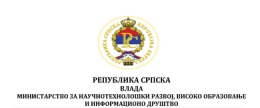The importance of lower body strength and power for future success in proressional men’s basketball
Volume 10, Issue 1 (2020)
Volume 10, Issue 1 (2020)
The importance of lower body strength and power for future success in proressional men’s basketball
Apstrakt:
Heavy resistance exercise is often prescribed for collegiate basketball players to enhance game performance, but few data are available concerning the transference of lower body strength and power to the opportunity to play professionally after college. This study investigated if lower body muscular power and strength measures obtained during the barbell squat are related to future professional playing opportunities. The data was collected over a seven year period from a collegiate men’s basketball program (n=37; X±SD, age=20.0±1.4 yrs, hgt=1.98±0.09 m, bw=94.5±11.8 kg). Lower body strength was determined from 1 repetition maximum (1RM) tests of the parallel high-bar squat. Maximum lower body squat power was determined from speed squat testing across a load spectrum (30-90% 1RM) while an external tethered dynamometer
or a 3-D video motion capture system quantifi ed barbell power. Repeated measures ANOVA with Tukey’s HSD post hoc, Spearman ρ correlations, and Cohen’s D eff ect sizes were used to analyze the results. Subjects who subsequently played in the NBA or in professional leagues elsewhere had greater lower body strength and power. This was mainly attributed to their greater body mass, since strength and power relative to body mass was not diff erent between the groups. Even without statistically signifi cant diff erences, eff ect sizes consistently indicated moderate to large diff erences between the NBA and other professional groups when compared to those who did not play professionally. Regardless, lower body strength and power were related to post-collegiate playing opportunities, with greater values related to higher levels of
professional play.
Ključne riječi:
player evaluation, sport, assessment, sports testing, college sports
Puni tekst:
DOI:
Reference:
Berri, D. J., Brook, S. L., & Fenn, A. J. (2011). From college to the pros: Predicting the NBA amateur player draft. Journal of Productivity Analysis, 35(1), 25-35.
Chaouachi, A., Brughelli, M., Chamari, K., Levin, G. T., Abdelkrim, N. B., Laurencelle, L., & Castagna, C. (2009). Lower limb maximal dynamic strength and agility determinants in elite basketball players. The Journal of Strength & Conditioning Research, 23(5), 1570-1577.
Channell, B. T., & Barfi eld, J. P. (2008). Eff ect of Olympic and traditional resistance training on vertical jump improvement in high school boys. The Journal of Strength & Conditioning Research, 22(5), 1522-1527.
Comfort, P., Stewart, A., Bloom, L., & Clarkson, B. (2014). Relationships between strength, sprint, and jump performance in well-trained youth soccer players. The Journal of Strength & Conditioning Research, 28(1), 173-177.
Davidson, J. (2011, July 8). Facts about a basketball player. Retrieved January 15, 2020, from https://www.sportsrec.com/417157-facts-abouta- basketball-player.html.
Delextrat, A., & Cohen, D. (2009). Strength, power, speed, and agility of women basketball players according to playing position. The Journal of Strength & Conditioning Research, 23(7), 1974-1981.
Fry, A. C., Honnold, D., Hudy, A., Roberts, C., Gallagher, P. M., Vardiman, P. J., Dellasega, C. (2011). Relationships between muscular strength and batting performances in collegiate baseball athletes. The Journal of Strength & Conditioning Research, 25, S19-S20.
Fry, A. C., Kraemer, W. J. (1991). Physical performance characteristics of American collegiate football players. The Journal of Strength & Conditioning Research, 5(3), 126-138.
Fry, A. C., Kraemer, W. J., Weseman, C. A., Conroy, B. P., Gordon, S. E., Hoff man, J. R., Maresh, C. M. (1991). The eff ects of an off -season strength and conditioning program on starters and non-starters in women’s intercollegiate volleyball. The Journal of Strength & Conditioning Research, 5(4), 174-181.
Gonzalez, A. M., Hoff man, J. R., Rogowski, J. P., Burgos, W., Manalo, E., Weise, K., ... & Stout, J. R. (2013). Performance changes in NBA basketball players vary in starters vs. nonstarters over a competitive season. The Journal of Strength & Conditioning Research, 27(3), 611-615.
Gonzalez, A. M., Hoff man, J. R., Scallin-Perez, J. R., Stout, J. R., & Fragala, M. S. (2012). Performance changes in National Collegiate Athletic Association Division I women basketball players during a competitive season: Starters vs. nonstarters. The Journal of Strength & Conditioning Research, 26(12), 3197-3203.
Hoff man, J. R. (2003). Physiology of basketball. Handbook of sports medicine and science: Basketball, 12-24.
Hoff man, J. R., Tenenbaum, G., Maresh, C. M., & Kraemer, W. J. (1996). Relationship between athletic performance tests and playing time in elite college basketball players. The Journal of Strength & Conditioning Research, 10(2), 67-71.
Kraemer, W. J., Ratamess, N., Fry, A. C., Triplett-Mcbride, T., Koziris, L. P., Bauer, J. A., ... & Fleck, S. J. (2000). Infl uence of resistance training volume and periodization on physiological and performance adaptations in collegiate women tennis players. The American Journal of Sports Medicine, 28(5), 626-633.
Korkmaz, C., & Karahan, M. (2012). A comparative study on the physical fi tness and performance of male basketball players in diff erent divisions.
Köklü, Y., Alemdaroğlu, U., Koçak, F., Erol, A., & Fındıkoğlu, G. (2011). Comparison of chosen physical fi tness characteristics of Turkish professional basketball players by division and playing position. Journal of human kinetics, 30, 99-106.
Lucero, R. A., Fry, A. C., LeRoux, C. D., Hermes, M. J. (2019). Relationships between barbell squat strength and weightlifting performance. International Journal of Sports Science & Coaching, 14(4), 562-568.
McInnes, S. E., Carlson, J. S., Jones, C. J., & McKenna, M. J. (1995). The physiological load imposed on basketball players during competition. Journal of sports sciences, 13(5), 387-397.
Pojskic, H., Sisic, N., Separovic, V., & Sekulic, D. (2018). Association between conditioning capacities and shooting performance in professional basketball players: An analysis of stationary and dynamic shooting skills. The Journal of Strength & Conditioning Research, 32(7), 1981-1992.
Teramoto, M., Cross, C. L., Rieger, R. H., Maak, T. G., & Willick, S. E. (2018). Predictive validity of National Basketball Association draft combine on future performance. The Journal of Strength & Conditioning Research, 32(2), 396-408.
Sallet, P., Perrier, D., Ferret, J. M., Vitelli, V., & Baverel, G. (2005). Physiological diff erences in professional basketball players as a function of playing position and level of play. Journal of sports medicine and physical fi tness, 45(3), 291.
Spiteri, T., Nimphius, S., Hart, N. H., Specos, C., Sheppard, J. M., & Newton, R. U. (2014). Contribution of strength characteristics to change of direction and agility performance in female basketball athletes. The Journal of Strength & Conditioning Research, 28(9), 2415-2423.
Seitz, L. B., Reyes, A., Tran, T. T., de Villarreal, E. S., & Haff , G. G. (2014). Increases in lower-body strength transfer positively to sprint performance: a systematic review with meta-analysis. Sports medicine, 44(12), 1693-1702.
Wen, N., Dalbo, V. J., Burgos, B., Pyne, D. B., & Scanlan, A. T. (2018). Power testing in basketball: Current practice and future recommendations. The Journal of Strength & Conditioning Research, 32(9), 2677-2691.
Wisløff , U., Castagna, C., Helgerud, J., Jones, R., & Hoff , J. (2004). Strong correlation of maximal squat strength with sprint performance and vertical jump height in elite soccer players. British journal of sports medicine, 38(3), 285-288.






